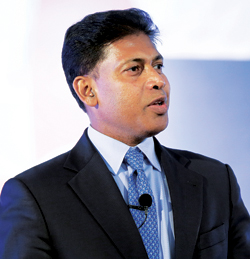INDIAN ARMED FORCES CHIEFS ON
OUR RELENTLESS AND FOCUSED PUBLISHING EFFORTS

SP Guide Publications puts forth a well compiled articulation of issues, pursuits and accomplishments of the Indian Army, over the years

I am confident that SP Guide Publications would continue to inform, inspire and influence.

My compliments to SP Guide Publications for informative and credible reportage on contemporary aerospace issues over the past six decades.
F/A-18 Super Hornet: Multi-role Advanced Fighter for Navy and Air Force


The F/A-18 Super Hornet operates off the decks of the US Navy’s aircraft carriers and is part of the Royal Australian Air Force’s fleet to offer advanced, combat-proven strike capability. The Super Hornet is the multi-role solution for the Navy and international air force customers. The Royal Australian Air Force operates 24 Super Hornets and 12 Growlers. Seven air forces around the world use the Hornets. The F/A-18 Super Hornet brings the latest generation of technologies to the warfighter. It has the right level of stealth, the right sensors and the right weapon capabilities for the IAF’s missions.
Introduced in 2007, the F/A-18 Super Hornet Block II is the world’s preeminent carrier capable aircraft. The F/A-18 Super Hornet was designed from day one for carrier operations and is the world’s preeminent carrier capable aircraft. It is a combat proven, supersonic, all weather multirole fighter jet with a defined US Navy flight plan to outpace threats into the 2040s. Every Super Hornet to the US Navy has been delivered on cost and on schedule.
The Super Hornets are fully compatible with the Indian Navy’s aircraft carriers. Extensive simulation has shown that the Super Hornet is capable of conducting STOBAR operations with a meaningful weapons and fuel load.
The Super Hornet’s benefits of being a twin-engine aircraft help provide the warfighter a margin of safety that does not exist in a single-engine platform.
The F/A-18 Super Hornet not only has a low acquisition cost, but it costs less per flight hour to operate than any other tactical aircraft in US forces inventory. As a twin engine fighter, the Super Hornet costs less to operate than single engine fighters.
Future Growth Potential
The Super Hornet will be on the Navy’s carrier decks well into the 2040s – being three-fourths of the Navy’s strike fighter capacity into the 2030’s and no less than half the carriers striking force into the 2040’s. The next generation of Super Hornet aircraft comes into the US Navy and potentially international customers to fulfill its role as the next-gen airplane in a complementary way with the F-35. Those two airplanes are going to work together on the carrier decks for the US. Navy, well into the 2040s.
The future insertion of conformal fuel tanks will reduce weight and drag while expanding range of the Super Hornet. As part of this development path, the enhanced GE 414 engine offers an opportunity for collaboration with Indian firms to use in the LCA and future AMCA.
F/A-18 Super Hornet – Make in India
Boeing has had a presence in India for more than seven decades and is committed to expanding that partnership by producing Super Hornets in India, further developing India’s aerospace ecosystem. Boeing is prepared to bring its global scale and supply chain, its best-in-industry precision manufacturing processes, as well as the company’s unrivaled experience designing and optimizing aerospace production facilities to bear in both expanding India’s aerospace ecosystem and helping realize the Make in India vision. The approach addresses the infrastructure, personnel training, and operational tools and techniques required to produce a next gen fighter aircraft right here in India.
With advanced technologies and multi-role capabilities, the Super Hornet is perfectly suited to meet the needs of the Indian Navy and Indian Air Force now and in the future.
The writer is President of Boeing India and Vice President of Boeing International, and he also serves as Managing Director of Boeing Defence India.





